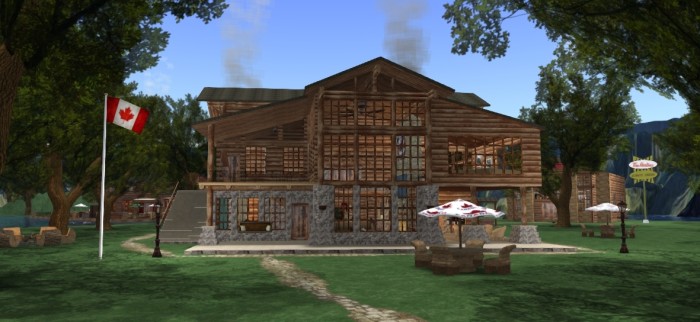
The Great Canadian Grid is back, grid owner Rod MacDougall — also known as Roddie Macchi in-world – told Hypergrid Business.
“IÂ have spent an entire year day and night learning the back end of everything,” he said.

Previously, MacDougall used an OpenSim hosting provider to manage the back end, a decision he said contributed to the grid’s closing this past March.
“Finally, no one to sabotage us,” he said. “I am still learning but I am very happy to know I have things working again — without anyone’s help.”
In addition to a dispute with his hosting company, DigiWorldz, other factors that hurt the grid were an unsuccessful crowdfunding campaign and a coronavirus-related hospital stay.
Users will have to create new accounts on the grid, via the registration page.
Users can also rent regions, starting at just CAD $5 (US $3.80) per month for a 15,000-prim region.
MacDougall said that he is able to offer prices this low because he’s no longer spending more than CAD $500 a month on technology support services on top of the base server costs.
“I was devoted and dedicated to spending day and night to learn as much as I can to get us back,” he said. “No more letting anyone dictate us or have control over us. I’m very excited to finally do it the way I’ve always felt it should be done.”
MacDougall has the backups of OAR region files from the previous incarnation of the grid, but there were problems with how the textures were saved.
“I have over 12 folders of OARs I saved just in case I came back,” he said. “I am sure those who loved it here can always upload new textures that will stay this time.”
The loginURI address is login.greatcanadiangrid.ca:8002.
The grid has an in-world currency, MC$, via Podex. It also offers free OAR region uploads and free IAR inventory uploads, free stores for creators, and daily database and OAR backups, but no variable-sized regions.
There is no hypergrid access this time around, meaning that people can’t teleport in from other grids.
“I want to know who’s coming in and out this time,” said MacDougall. That will help make the grid safer, he said.
However, the lack of hypergrid access and a local currency means that users will be taking a risk when opening accounts on the grid.
With hypergrid access, users can have avatars on other, more stable grids, and teleport in for events or shopping or other activities. If the grid shuts down, their avatar inventories and friend lists aren’t lost.
The local currency is also a risk. If the grid shuts down, residents could potentially lose their currency balances. By comparison, the most popular currency option, Gloebits, allows a single currency to be spent on many grids, and is independent of any of them. Even if a particular grid shuts down, users still have access to their money and can spend it anywhere else.
Another risk for users is not having the ability to download their OAR or IAR files. So if a user, say, spends a great deal of time on a build, and the grid shuts down, they may lose all their work. Other grids offer the ability for users to download entire regions as OAR backups or entire inventory folders as IAR backups. Grids that are concerned about protecting intellectual property rights filter those exports to protect proprietary content, which is what Kitely does.
Lack of hypergrid access also means that local residents can’t teleport to other grids to visit friends there — or go shopping.
To address this issue, MacDougall said that he is working with Kitely CEO Ilan Tochner to allow deliveries from the Kitely Market.
- Kitely Mega Worlds on sale for $90 per month - July 19, 2024
- OpenSim regions up, actives down with summer heat - July 15, 2024
- People think AIs are conscious. What could this mean for bots in OpenSim? - July 12, 2024
